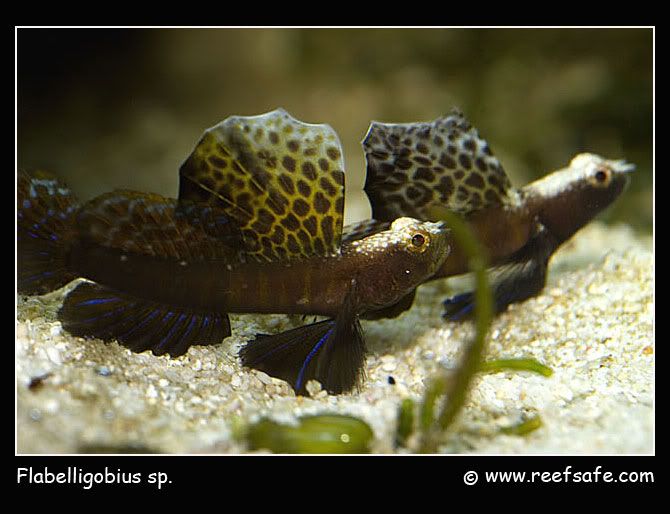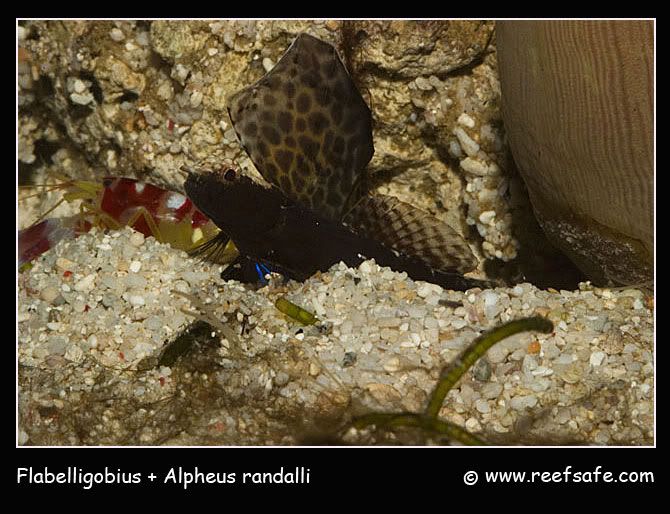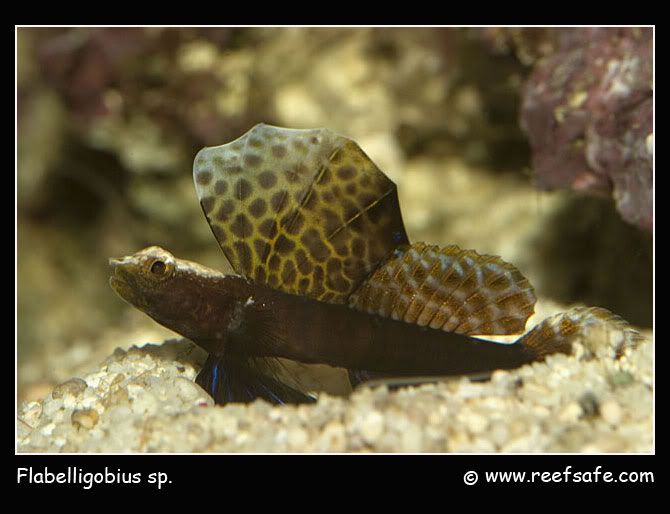It helps a lot to have good friends who work in the industry and call you as soon as something arrives which might be of interest. When Jörg Kokott called me and told me that an unusual sailfin goby arrived and that it was even two which seemed to be a pair, I got in my car and picked them up. After seeing them I remembered that I have seen them in an Asian reefers forum and that they where supposed to be partner gobies (which pair up with shrimp). Seeing the small size I decided Alpheus randalli would be a perfect match if the assumption was right. It was clear to see that the coloration of the sail-like dorsal fin was different in both fish. One more blue and one more yellow – I was hoping indeed for a pair.

After placing the fish in the tank it took quite a while until both fish found each other and even more until they found their pistol shrimp. They all shared a burrow and I was sure to have acquired a pair – lucky me! They took all kinds of frozen food like brine and mysid shrimps. It took me a few months to fatten them up, and I could see that one fish developed a bigger “belly”. Although I could never see any courtship, etc it was clear that they where spawning in regular cycles. The eggs are hidden within the cave and I would have been very interested to see what role the Alpheus played during the nesting period. I only once found eggs after having to remove a stone – so I was sure that they were a reproductive pair. Due to time constrains I never tried to capture any larvae or to raise them. Looking back I should have at least tried, as I have never seen this fish in the trade again. My couple died after about 3 years; I considered that as their normal life span but can’t tell for sure.

I never figured out what they use these small “horns” on their upper jaw for – one of the mysteries of this special fish. How this fish lives in the wild is also completely unclear. We also don’t know which is the correct pistol shrimp normally associated with them. And of course, we don’t know if this fish has been officially described and given a name.











0 Comments